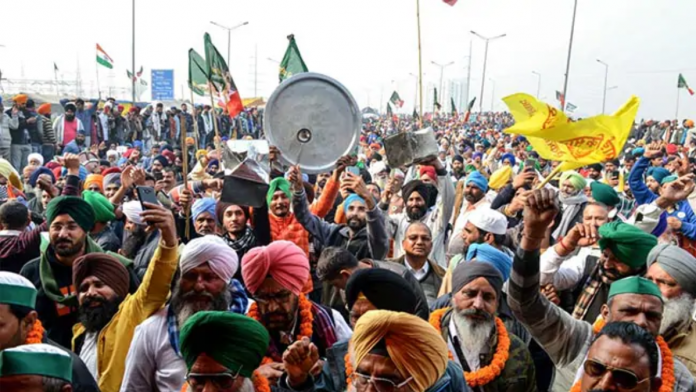News in brief:
– Thousands of farmers march towards Delhi, India, in protest, demanding guaranteed crop prices and loan waivers, prompting lockdown measures and clashes with authorities.
– Core demands include minimum crop prices and debt forgiveness, highlighting ongoing struggles in India’s agriculture sector amidst election concerns and logistical challenges for the government.
India has enforced a lockdown in its capital, in a bid to address the escalating tensions between authorities and farmers, as thousands march towards Delhi to demand guaranteed crop prices and loan waivers.
As farmers from surrounding regions, particularly Punjab, Haryana, and Uttar Pradesh, mobilise toward Delhi, police have set up barriers, barricades, and barbed wire along city access roads. Footage from Haryana, located several hours away, reveals the use of tear gas to disperse protesters, creating a challenging situation for both demonstrators and authorities.

Failed talks heighten tensions
Despite a lengthy meeting between protest organisers and government officials, no consensus has been reached. The failure of talks has prompted thousands of cultivators, dissatisfied with the unresolved issues dating back three years, to continue their march towards Delhi.
With a general election looming, officials in Haryana have imposed restrictions near the state border to prevent a recurrence of farm protests from 2020. Delhi police have issued a 30-day ban on gatherings, rallies, and marches across the city.
Core demands of protesting farmers in India
Farmers are advocating for a minimum price for each crop, a demand dating back to protests in 2020. The government’s challenge to implement this across various crops is acknowledged, but rural voters remain crucial in Indian elections. The protest also includes demands for debt forgiveness, with outstanding agricultural loans surpassing 18.4 trillion rupees (or $220.8 billion).
India, despite being a rapidly growing economy and a leading food exporter, grapples with income and productivity disparities in its agricultural sector. Extreme weather conditions and recent export curbs have added to the challenges. The agriculture sector, employing nearly half of India’s workforce, contributes less than a fifth to the GDP.



